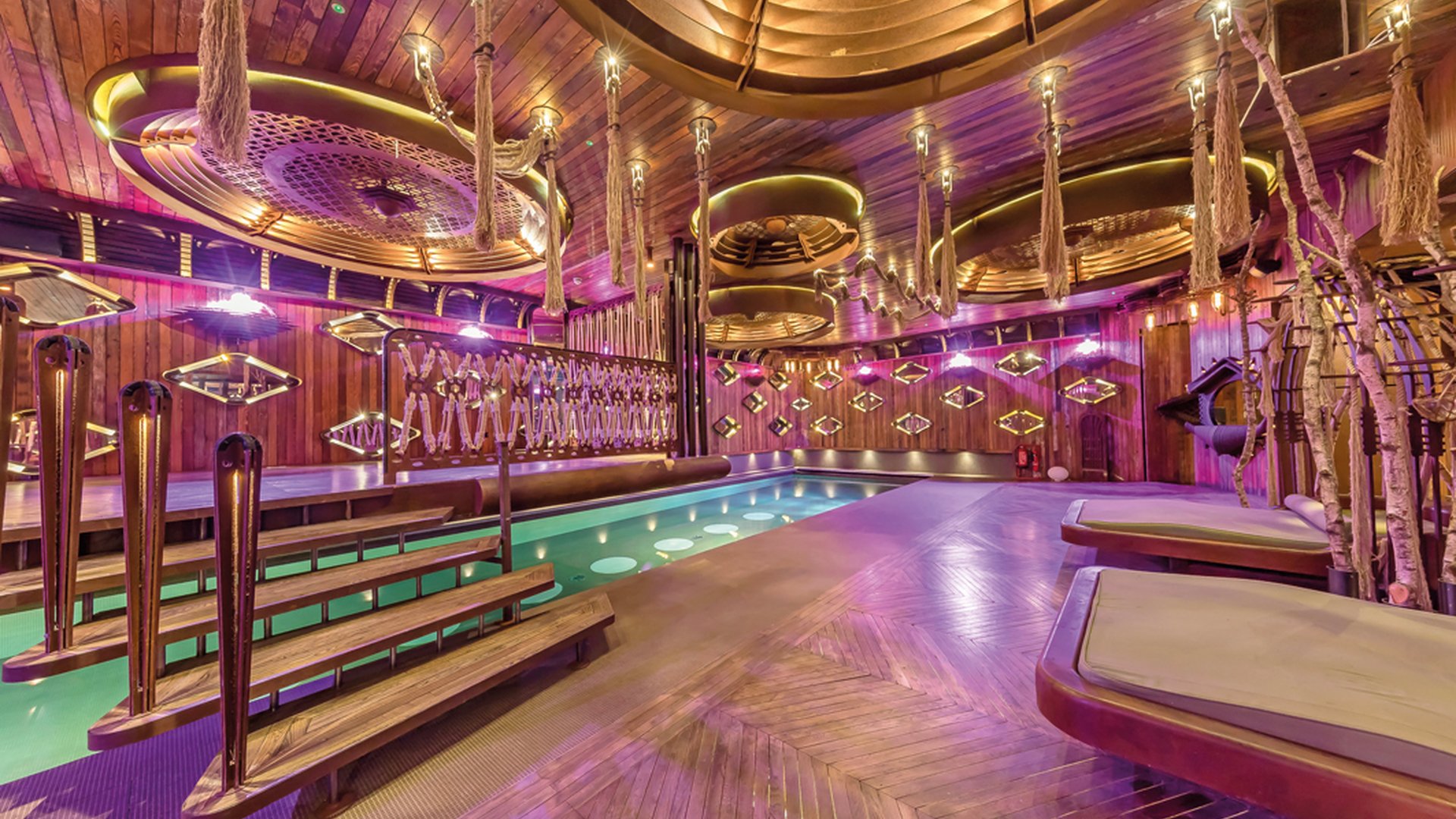From massage stations to moving floors, we look at the latest trends in London indoor pool design.
The ultimate luxury is an indoor swimming pool and in London, where space is at a premium, they are often situated at basement level. Indoor pools do require planning permission and contractors will usually work closely with a client’s architect to ensure that the build runs smoothly.
Tony Kirk of specialist design and construction company Luxury Pools, says, “The most important aspect is planning the layout because heat and ventilation systems are required and, from an aesthetic point of view, you don’t want to see grills and vents. An ideal size plant room for a standard pool is about 12 square metres, which also needs to be incorporated in the layout.”
Given our preoccupation with ‘wellness’ it is perhaps unsurprising that some people want more than just a pool. According to Kirk, “The biggest trend currently is to recreate a boutique spa, so where there is room, we will install a bespoke sauna and steam room as well.”
Gareth Morgan of Morgan Pools says that massage stations within the pool are increasingly requested. “They are becoming more popular than having a separate Jacuzzi because they don’t take away from the aesthetics of the design of a rectangular pool. Recently, in Mayfair, we built an underwater bench with massage jets with a dedicated heating system, so, when the client turns them on, water comes through hot just like in a Jacuzzi.”


Morgan is also installing Fastlane exercise systems. “Hydraulic power creates a huge current of water that you swim against. You can put one at the end of a small pool that’s six or seven metres and exercise as if you have a 25-metre pool. We are putting one in for a client in Highgate with a mirror so you can check your stroke. There’s an app to tell you about your performance and a floating remote to adjust the speed.”
Rectangular shaped pools are most common and experts report a growing interest in stainless steel pools. You could choose an infinity pool or go for a ‘slot gully’ which gives a pool the appearance of a water-covered floor. Tiling and lighting are important considerations. Ceramic flooring tends to be favoured over natural stone which needs more maintenance and underwater LED lights can be very effective in a wide range of colours.
Extra design options include fountains which cascade from the ceiling and moving floors which convert your pool into a regular room. Jamie Smith of London Swimming Pool Company explains, “The pool is designed with a floor at the base. When the moving floor is activated, it rises to the top covering the water with a solid floor. Using a control panel, clients can also pre-set the depth for swimming, adjusting the floor level to a shallow depth for children for example.”
Nowadays, you don’t have to emerge from your swim smelling of chlorine. Filtration systems, such as those which use ultraviolet, offer a virtually chemical free experience, expunging bacteria to such an extent that only a small amount of chlorine, indiscernible to the senses, is required. The cleanliness and temperature of a pool can be monitored via iPhone or iPad but key to general upkeep is a maintenance programme, which would usually be provided by the company that installed the pool.
So, with the logistics taken care of, you can dive in and devote yourself to perfecting that front crawl in the fast lane or, you could just relax.

